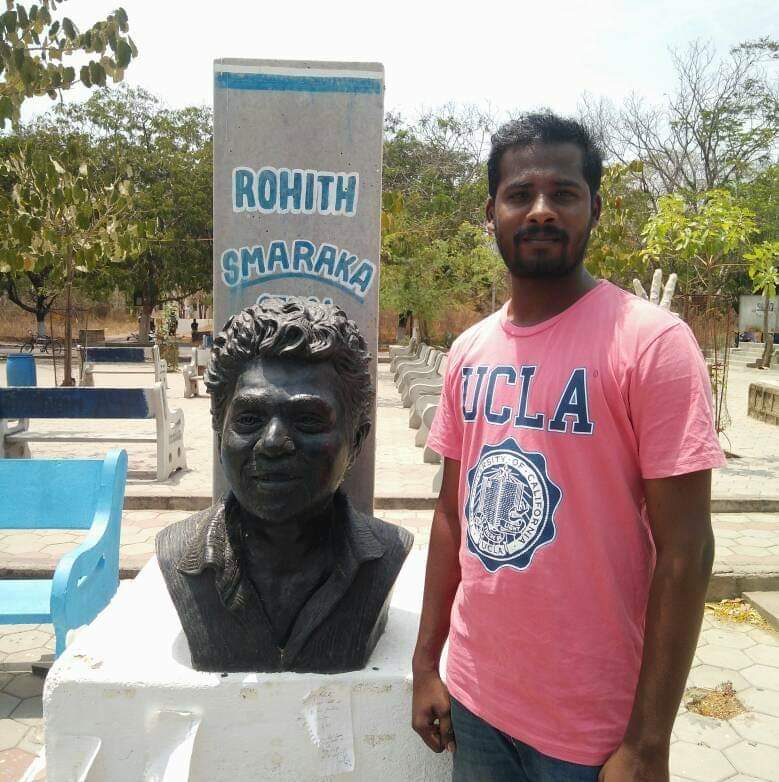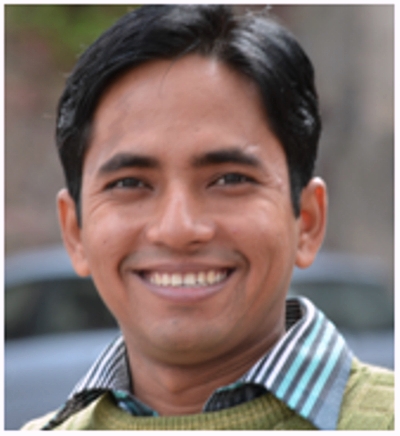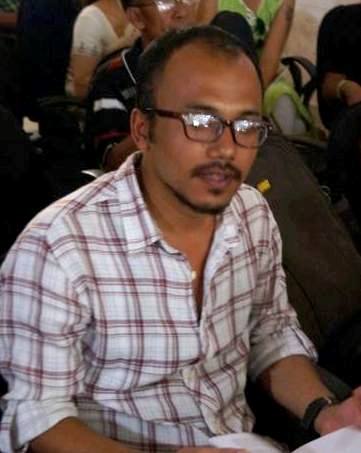Ramkumar Govindan
 Introduction
Introduction
In the recent past, the market for movies on anti-caste politics has gained momentum in Indian cinema, especially in Tamil cinema. The young directors of Tamil Nadu such as Pa. Ranjit, Lenin Bharathi, Maari Selvaraj, Raju Murugan, Vetri Maran etc., are making movies with progressive ideology, dealing with subjects on anti-caste politics, and portraying the lives of marginalized communities. The movies of this genre are receiving support from the wider audience (including a section of caste Hindus) and making capital commercially. This is a new trend in the Tamil cinema space.
Asuran (2019) is an interesting addition to this genre (trailer of the movie is here, https://www.youtube.com/watch?v=vOCM9wztBYQ). It is directed by Vetrimaaran and produced by Kalaipuli S. Dhanu. It talks about resistance, negotiation, and assertion of Dalits of Thirunelveli district against caste Hindu landlords. The period that it discusses is between 1960s and 1970s. It has Dhanush (as Sivasamy) in the lead role, Manju (as Manimekhalai) as his wife, and Pasupathi as his brother-in-law. Also, the lead pair are parents to three children, 20, 15, and 5 years old.
The movie is based on a novel, Vekkai, written by Poomani, a Sahithya Academy winning writer (in Tamil). Broadly, this movie weaves events around two issues: one, the sacrifices that a Dalit family makes to save a small piece of land (reminding you of Khairlanji); and two, the loss that a hamlet suffers during a land (pañcami) reclamation struggle (somewhat like Kilvenmani).
Since the beginning of 20th century, the history of Madras Presidency/Tamil Nadu shows, there have been many peoples’ movements consistently generating counter-narratives against caste, Hindutuva forces, and majoritarianism. Iyothee Thass, Singaravelu, L.C. Gurusamy, and Periyar were pioneers of these movements. The title of this movie, Asuran, is quite aligned with this legacy. As per the Hindu religious texts, the meaning of the word “Asuran” is demon. However, the movie portrayed Asuran as someone who fights for self-respect and rights of the people.
In ordinary lives of marginalized communities, Asuran(s) cannot function in confrontational mode always, since they do not have caste, class, and cultural capital. Hence, they are forced to negotiate and settle for a meager share in this society. Vetrimaaran was able to bring this everyday reality of Dalits on screen. For example, in a scene, the father (Dhanush) gives up his self-respect to save the life of his elder son from wrath of a landlord family. The caste panchayat forces him to fall on the feet of representatives of all the caste Hindu families of the village, some families send their children as representatives. It is diabolic to watch an elderly person falling on the feet of children.
After this humiliation, his wife (Manju) asks him, “Why did you humiliate yourself? Don’t you have some self-respect?” He replies, “puḷḷa pōyiṭṭā, kavuravattai vacci eṉṉa paṇṇa” (What will we do with pride, if our son dies). This dialogue is a tight slap on the people who follow caste Hindu ideology, on people who do not even think twice to kill their own sons and daughters to save their caste pride. The dialogues are so powerful in this movie.
Who is Asuran?
A beautiful aspect is that Asuran is not a single man or a woman, Asuran can be anyone who fights against oppression. For example, Tee Jay (elder son) fights for their family land, Manju stands for the rights over water, and Ken Karunas (younger son) kills a landlord as revenge for killing his elder brother. The director had developed each character meticulously.

Land is the core subject of this movie. There are two types of land that it talks about: pañcami land that is under the control of Dalits and pañcami land that is taken over by others (caste Hindu landlords). The pañcami land, also called as Depressed Class conditional land, is a land classification which was allotted to Dalits during the British colonial rule for their social and economic empowerment. This type of land cannot be sold to non-Dalits (officially). The British colonial government allotted around twelve lakh acres of land in Madras Presidency as per a report submitted by James H. A. Tremenheere, the then Collector of Chengleput in 18911.
The first portion of the movie brings to light the kind of struggle that a Dalit family undergoes to hold on to a piece of land. Their land is next to the land of a landlord and that landlord wants to sell his land to a person who wants to build a cement factory. However, the investor does not wish to buy that piece of land (of landlord) without the adjacent land (of the Dalit family). This sets the context and the ball starts rolling.
First, the landlord lays an electric fence on the access path to that land of the Dalit family; second, he forces the family to sell their land using caste panchayat; third, he pumps the water from the common well (to his land) using a motor pump instead of traditional ways; fourth, he uses paid assassins to kill the elder son; fifth, the family then go on a run to save their second son; and sixth, after running out of options, they then agree to sell their land to save their son. The Dalit family persistently fights back in all these stages. However, the class, caste, state, and power nexus help the family of the landlord to succeed at every stage. This section has some resonance with Khairlanji issue2.
The second portion of the movie (which comes as a flashback) talks about lives of Dalit families of a hamlet who try to reclaim their pañcami land from the hold of caste Hindu landlords. With the ideological support of a left political party, the Dalits of that region organize themselves to carry forward this agenda. Prakashraj had acted as a left political leader cum advocate in this movie. The leader of caste Hindu landlords with the help of state and local thugs crushes the movement and burns the houses and people alive. The scenes of this portion of the movie remind people of Kilvenmani massacre3.
Oppression and assertion
The transition of Dhanush from a skilled, lumpenized labourer to a caste-class conscious proletarian is nicely captured by the director. The assertion against caste oppression makes him to confront a caste Hindu landlord and his supporters. In a scene, his cousin sister wears footwear to the school (for the first time) and walks through the caste Hindu street and local market. The infuriated caste Hindu men then physically harass her in public and make her walk back to her house while holding footwear on her head. This event changes the perception of Dhanush about his owner/landlord.
The cost/lives that Dalits pay as a price for their assertion is captured well in this movie. In one scene, Tee Jay removes the electric fence that was erected by the landlord to curtail the access road. In retaliation, he gets arrested by the local police (because of pressure from the landlord) and bashed up in the station. At one stage, the landlord with the help of local thugs beheads him and throws him as food to street dogs. The police officials do not even file a case and say that without the head they cannot determine the identity of the dead body.
Educate, Agitate, Organise
The movie does not propagate revenge, it stands for rights, self-respect, dignity of marginalized communities. In the final scene, Sivasami tells his son (before going to prison), “If we own farmland, they [caste Hindus] will seize it; If we carry money, they will snatch it; But if we have education, they can never take it from us.” Further, he says, “you should study well and come to power. When you come to power, you don’t do the same to them.”
This movie showcases a counter-narrative against the dominant Hindu ideology. It touches many issues of Dalits, both past and present. When Dalit people resist and assert against oppression, they have been forced to face extreme violence in the hands of caste Hindus and state. The prevalence of caste hierarchy and oppression would force many more Asuran(s) to emerge in this society. They would follow the path of Mahatma Phule and Ambedkar and end up taking education as a tool to fight against caste shackles.
~
Notes
1. Rajasekharan Elangovan. 2017. How Dalits Lands were Stolen. Frontline. Accessed from: https://frontline.thehindu.com/social-issues/social-justice/how-dalit-lands-were-stolen/article9662667.ece
2. To know more about the Khairlanji Massacre: http://roundtableindia.co.in/~roundta3/index.php?option=com_content&view=article&id=8202:khairlanji-massacre-protests-2006-remembering-the-outrage-of-ambedkarite-youth&catid=119:feature&Itemid=132
&
http://roundtableindia.co.in/~roundta3/index.php?option=com_content&view=article&id=7302:khairlanji-gruesome-massacre-of-dalits-dalit-fury-scorches-maharashtra&catid=122:atrocities&Itemid=138
3. To know more about the Kilvenmani Massacre look at: https://www.thehindu.com/news/national/tamil-nadu/keezhvenmani-the-first-chronicle-of-violence-against-dalits-in-independent-india/article25826814.ece
~~~
Ramkumar Govindan is a Doctoral Scholar at the Tata Institute of Social Sciences, Mumbai.










